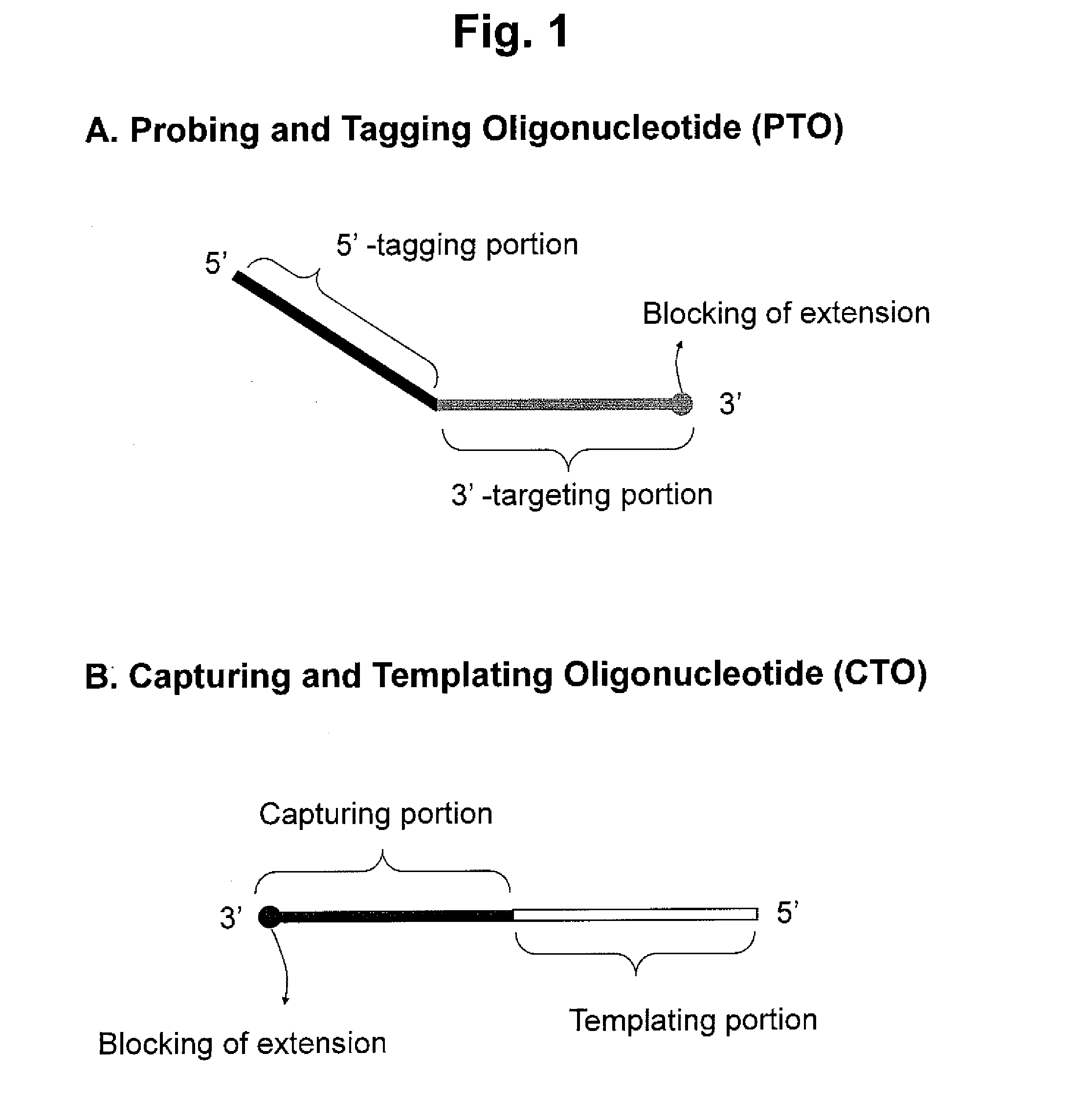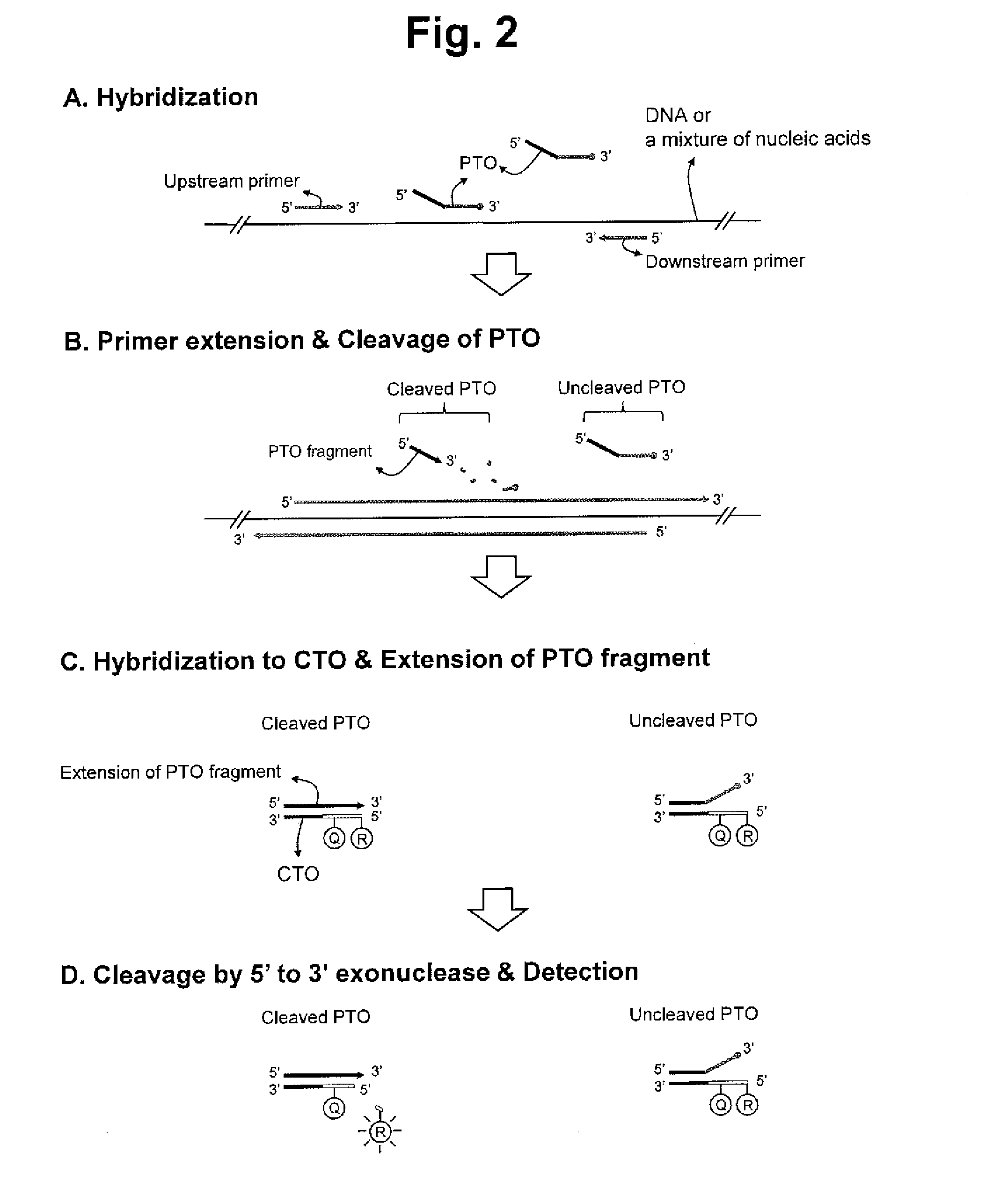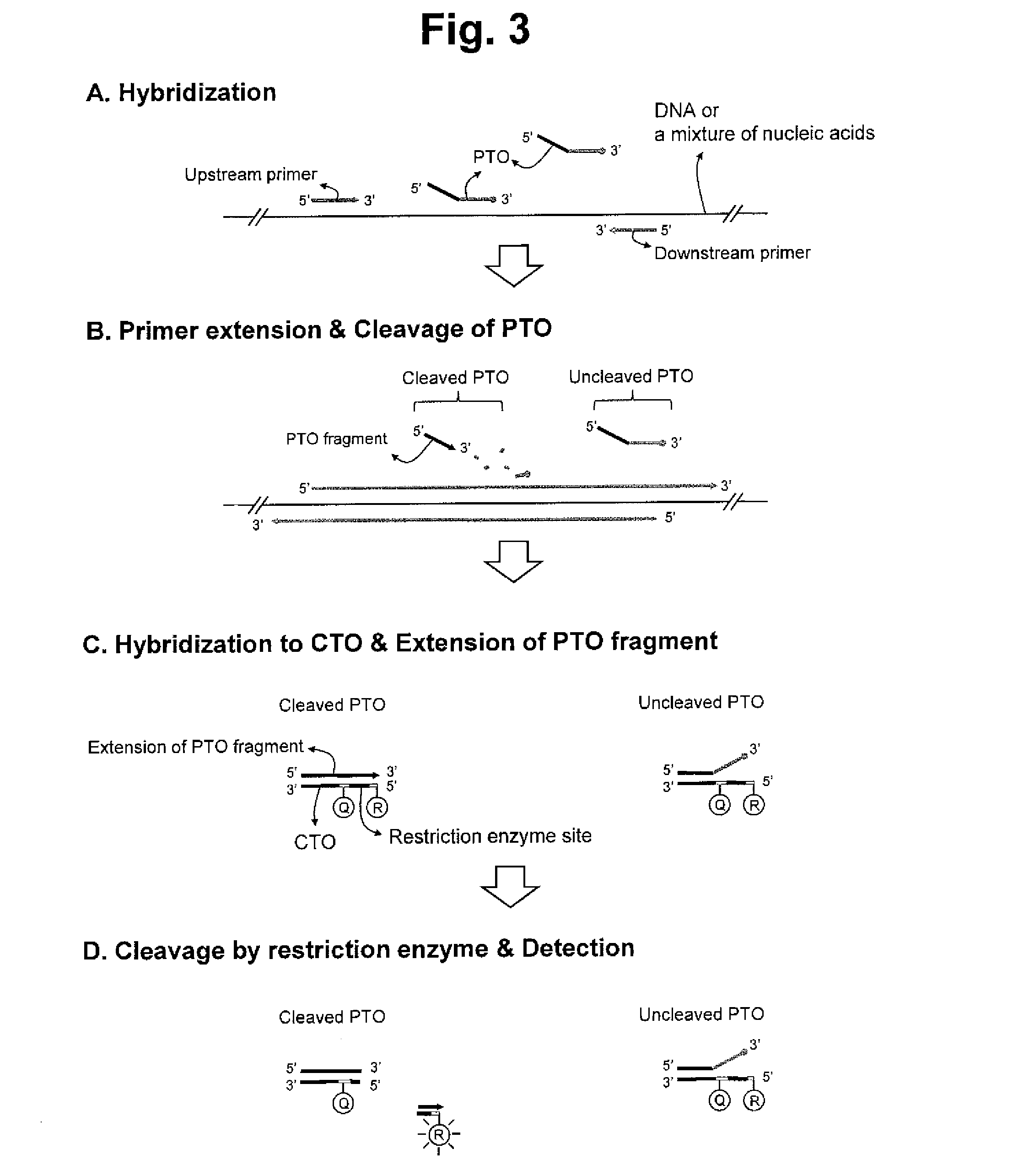Detection of target nucleic acid sequence by pto cleavage and extension-dependent cleavage
a target nucleic acid and pto cleavage technology, applied in the field of pcec detection of target nucleic acid sequences, can solve the problems of low efficiency of hybridization on solid substrates, problems to be solved for improving reliability, and the high probability of false positives of conventional methods and processes. , to achieve the effect of improving accuracy and convenience, improving accuracy and convenien
- Summary
- Abstract
- Description
- Claims
- Application Information
AI Technical Summary
Benefits of technology
Problems solved by technology
Method used
Image
Examples
example 1
Evaluation of PTO Cleavage and Extension-Dependent Cleavage (PCEC) Assay Using 5′ to 3′ Exonuclease
[0322]A new assay, PTO Cleavage and Extension-dependent Cleavage (PCEC) assay, was evaluated for the detection of a target nucleic add sequence using 5′ to 3′ exonuclease activity of Tag DNA polymerase (see FIG. 2).
[0323]Tag DNA polymerase having a 5′ nuclease activity was used for the extension of upstream primer, the cleavage of PTO and the extension of PTO fragment.
[0324]Furthermore, Tag DNA polymerase having a 5′ nuclease activity was used for the cleavage of the extended duplex.
[0325]PTO and CTO are blocked with a carbon spacer at their 3′-ends. PTO has no label. CTO has a fluorescent reporter molecule (FAM) at its 5-end and a quencher molecule (BHQ-1) in its templating portion. The extended duplex formed during the assay has the interactive dual label. The extended duplex has a cleavage site susceptible to 5′ nuclease activity of the Tag DNA polymerase at it 5′-end portion. The 5...
example 2
Evaluation of PCEC Assay Using Restriction Enzyme
[0330]We further evaluated PCEC assay for the detection of a target nucleic acid sequence using restriction enzyme (see FIG. 3).
[0331]Taq DNA polymerase having a 5′ nuclease activity was used for the extension of upstream primer, the cleavage of PTO and the extension of PTO fragment. Thermostable restriction enzyme (PspGI) was used for the cleavage of the extended duplex.
[0332]PTO and CTO are blocked with a carbon spacer at their 3′-ends. PTO has no label. CTO has a fluorescent reporter molecule (Cal Fluoro Red 610) at its 5′-end and has a quencher molecule (BHQ-1) in its templating portion. The CTO is designed to provide a restriction enzyme cleavage site for PspGI on the formation of an extended duplex. The extended duplex formed during the assay has the interactive dual label separated by the restriction enzyme cleavage site. The cleavage at the restriction enzyme site results in separation of the fluorescent reporter molecule (Cal...
PUM
| Property | Measurement | Unit |
|---|---|---|
| volume | aaaaa | aaaaa |
| nucleic acid sequence | aaaaa | aaaaa |
| ionic strength | aaaaa | aaaaa |
Abstract
Description
Claims
Application Information
 Login to View More
Login to View More - R&D Engineer
- R&D Manager
- IP Professional
- Industry Leading Data Capabilities
- Powerful AI technology
- Patent DNA Extraction
Browse by: Latest US Patents, China's latest patents, Technical Efficacy Thesaurus, Application Domain, Technology Topic, Popular Technical Reports.
© 2024 PatSnap. All rights reserved.Legal|Privacy policy|Modern Slavery Act Transparency Statement|Sitemap|About US| Contact US: help@patsnap.com










